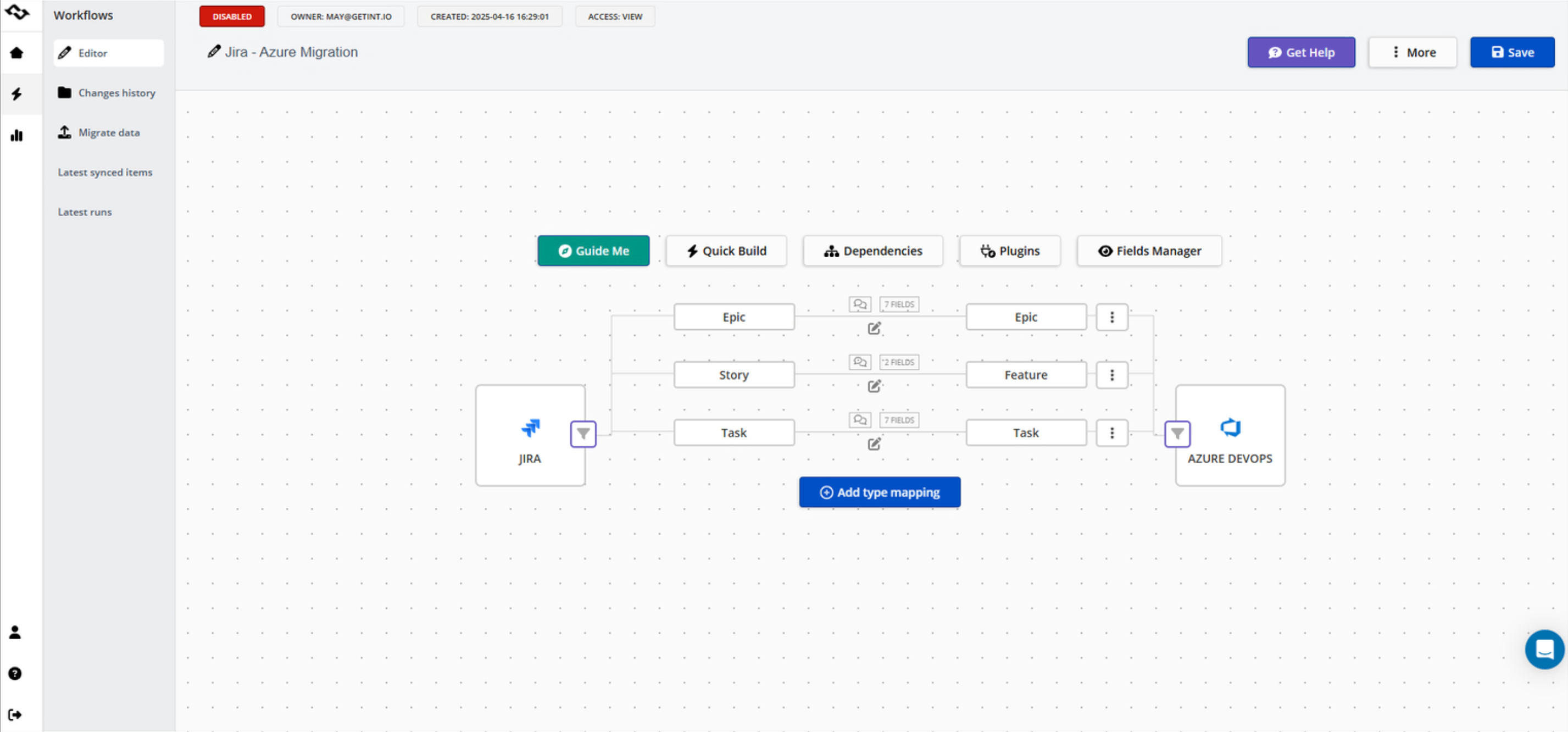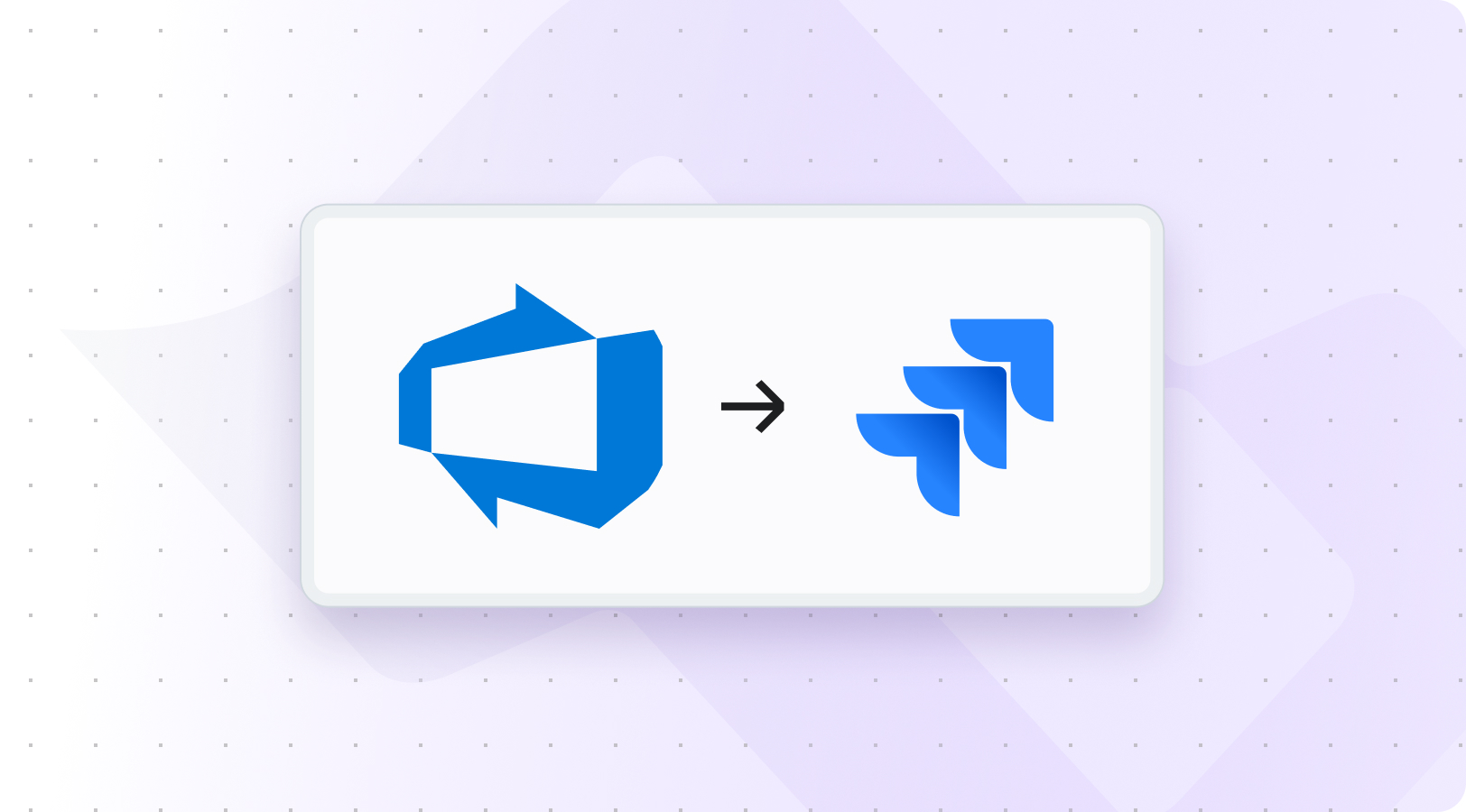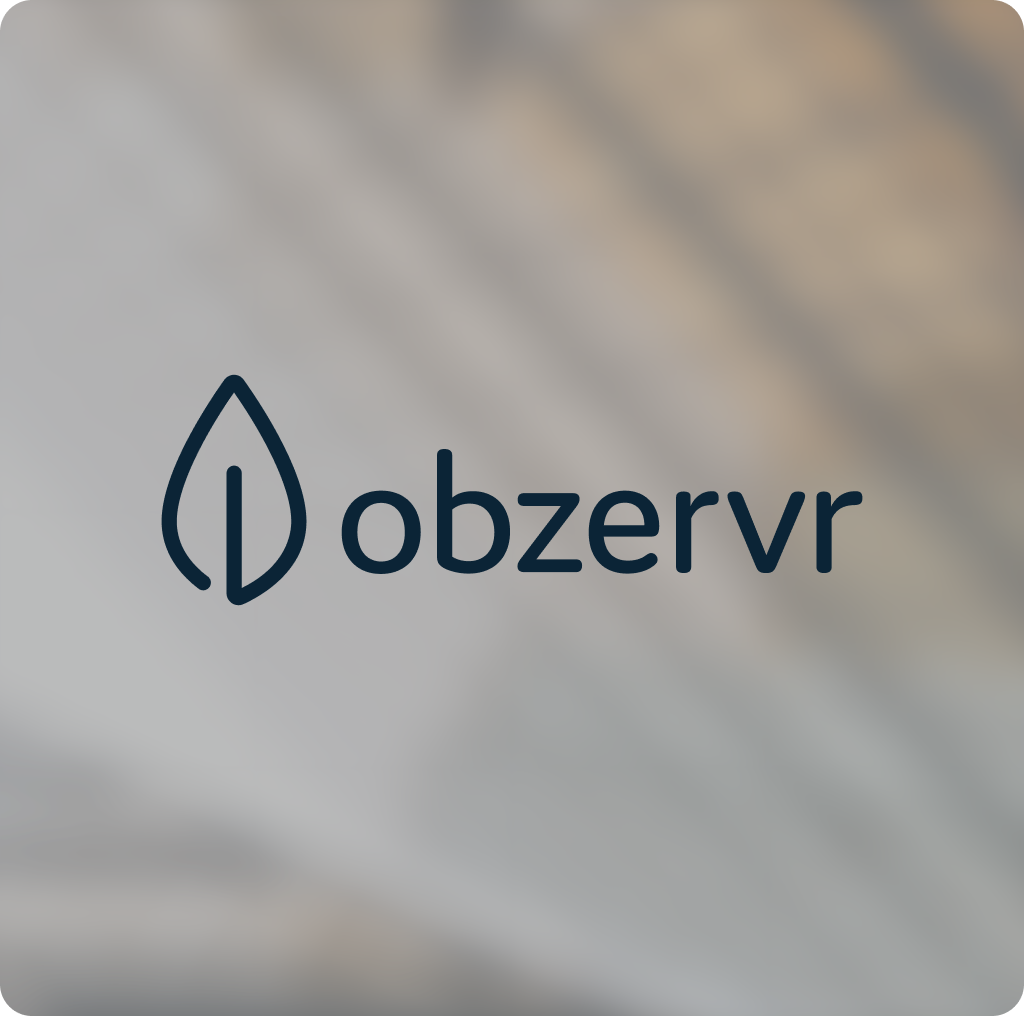For growing software teams, the question isn’t whether to migrate from Azure DevOps to Jira — it’s how to do it safely, efficiently, and without disrupting ongoing work.
Many companies start in Azure DevOps, managing repositories, pull requests, and development pipelines. But as their ecosystem expands, Jira Software becomes the go-to platform for agile planning, reporting, and collaboration. The good news? You don’t have to choose one over the other. With Getint, you can both migrate and integrate Azure DevOps with Jira, maintaining continuity across your development work.
Why Companies Move from Azure DevOps to Jira
Azure DevOps and Jira Cloud address different yet overlapping needs. Azure DevOps excels at managing git repositories, branches, and CI/CD deployments. Jira, on the other hand, provides agile workflows, sprint planning, and deep visibility into team progress. To better understand the differences in project structure between Jira and Azure DevOps, you can read a comprehensive comparison.
When both platforms coexist, information silos can appear — developers working in Azure DevOps while project managers track jira issues elsewhere. Over time, this dual setup can become time-consuming and prone to manual errors.
That’s why enterprises — especially those with complex development systems — often migrate or connect Azure DevOps with Jira for real-time synchronization, consolidated visibility, and full control over their environment.
Understanding the Tools Before You Start
Before you begin your migration or integration, it helps to understand how both Jira and Azure DevOps handle data differently:
- Work items vs. issues – Azure DevOps uses work items, while Jira manages issues. Each contains different field structures.
- Repositories and branches – Azure DevOps tracks branches, commits, and pull requests tied to code. Jira connects these through development information linked to issues.
- Permissions and access – Each system handles user rights and permissions separately. Mapping them correctly ensures secure and smooth migration.
- Automation rules – Jira workflows may automate tasks triggered by specific events, while Azure DevOps relies on pipelines or scripts.
A clear understanding of these concepts will help your team plan effectively and avoid surprises during migration.

Step 1: Preparing for Migration
Migrating from Azure DevOps to Jira requires thoughtful planning — it’s not just about moving data, but preserving the context that makes that data meaningful.
Here’s what to do before you start:
- Audit your projects – Identify which work items, attachments, and comments need to move. Clean up outdated tasks.
- Map fields and workflows – Note any custom fields in Azure DevOps and plan how they’ll translate into Jira.
- Review security requirements – Enterprises with strict security policies may need an on-premise setup or specific permissions configurations.
- Define success metrics – Decide what matters most: zero downtime, complete field mapping, or parallel sync.
- Verify access – Ensure both systems are accessible, and API tokens or service accounts are configured correctly.
Taking time to prepare ensures a smoother, predictable process and protects your teams from time-consuming rework later.
Step 2: Running the Migration with Getint
Getint’s Azure DevOps for Jira app, available on the Atlassian Marketplace, provides a structured and customizable way to migrate all your development data — including repositories, branches, comments, and attachments.
Here’s how a typical Getint-powered migration unfolds:
1. Install and configure the app
After installing the app, connect both systems using secure API credentials. You can deploy Getint in cloud or on-premise mode, depending on your environment.
2. Map your fields
Use Getint’s intuitive mapping interface to align Azure DevOps work items with corresponding jira issues. Custom fields like Iteration Path or Area Path can be mapped or merged using JavaScript for greater flexibility.

3. Test with a pilot
Before migrating everything, run a pilot migration with a smaller dataset. This lets you verify that data transfers accurately — including relationships, comments, and file attachments.
4. Migrate your full data
Once verified, perform the production migration. The app ensures zero downtime and preserves the links between items, commit messages, and development progress.

5. Review logs and reports
Getint provides detailed log and status reports after each migration. These help you track what’s moved, confirm success, and identify any adjustments.
Step 3: Keeping Both Tools in Sync
For many teams, migration is only half the story. The real value lies in maintaining an ongoing connection between Jira and Azure DevOps.
By enabling integration, you can continue to track branches, pull requests, and deployments from Azure DevOps directly in Jira. This two-way sync lets developers focus on code while managers view development activity and status updates inside Jira.
Teams can also automate requests, transitions, and updates, keeping their development pipelines aligned with agile plans — all without leaving Jira.
This flexibility helps enterprises adapt to hybrid workflows, especially when both Azure DevOps and Jira remain part of their long-term toolset.
Common Migration Challenges (and How to Solve Them)
Even with the best planning, a few challenges can arise during a migration:
- Field mismatch: Azure DevOps may use data types not directly supported in Jira. Getint’s mapping module and custom scripts solve this elegantly.
- Permissions issues: Cross-system access and API limits can block migration. Test them early to prevent interruptions.
- Large datasets: Migrations involving thousands of work items can strain systems. Getint handles this with batching and process automation.
- Security requirements: Some enterprises can’t use cloud solutions. Getint supports on-premise deployment to meet compliance standards.
Each challenge has a clear solution when you use a platform built specifically for integration and migration — not just data export.
Real-World Example: Automotive Enterprise Migration
When a leading German automotive company decided to migrate nine Azure DevOps projects to Jira, their biggest concern was data integrity. With thousands of work items, attachments, and custom fields, the risk of losing relationships or breaking workflows was high.
Using Getint’s Azure DevOps for Jira app, the migration was completed smoothly — preserving all links, comments, and development information. The solution ran behind the company’s firewall, meeting strict security requirements and ensuring full control over the environment.
Afterward, they enabled two-way sync between Jira and Azure DevOps, keeping their teams aligned even as they scaled globally.

Verifying and Optimizing After Migration
Once the migration and sync are complete, it’s important to verify that all systems work as expected. Check that:
- All jira issues have corresponding work items in Azure DevOps.
- Commit messages and branches display correctly in the new Jira Cloud environment.
- Automation rules trigger as intended for specific events.
Finally, document your configuration and train your team to use the new setup. A well-communicated transition ensures adoption and minimizes support overhead.
Conclusion: A Future-Proof Connection Between Jira and Azure DevOps
Moving from Azure DevOps to Jira doesn’t have to mean starting over. With Getint, you can migrate confidently, maintain synchronization, and build a platform for long-term collaboration.
Whether your goal is to modernize your tooling, simplify development work, or unify projects across teams, Getint’s integration offers both flexibility and reliability — without the complexity.
Getint Azure DevOps for Jira app on the Atlassian Marketplace to begin your secure, efficient, and fully supported journey today.
























